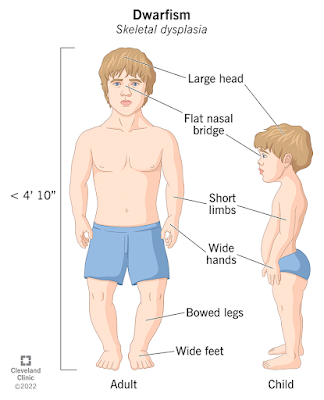Pycnodysostosis is a rare genetic disorder that significantly affects physical development and skeletal structure.
Table of Contents
Introduction
Pycnodysostosis is a rare genetic disorder that significantly affects physical development and skeletal structure. Characterized by a combination of micrognathia, exophthalmos, dwarfism, short fingers, and a distinct bone density anomaly known as osteopetrosis, this condition stands out for its unique set of symptoms and its complex implications for affected individuals. Despite its rarity, awareness and understanding of pycnodysostosis are crucial not just for medical professionals but also for the families and support systems of those impacted. This article will delve into the key features of pycnodysostosis, discussing its clinical manifestations, diagnostic considerations, and management strategies.
Key Clinical Features
Pycnodysostosis manifests through several prominent clinical features, each contributing to the overall impact of the disorder. The following are the primary characteristics:
1. Micrognathia: Often described as a small jaw, micrognathia is one of the hallmark features of pycnodysostosis. This condition not only poses aesthetic concerns but can also lead to functional difficulties, including feeding challenges and issues related to speech development.
2. Exophthalmos: This term refers to the abnormal protrusion of the eyeball. While exophthalmos may primarily affect appearance, it can also lead to complications affecting vision and ocular health if not adequately managed.
3. Dwarfism: Individuals with pycnodysostosis typically exhibit growth delays, resulting in shortened stature. The degree of dwarfism can vary, but it often requires ongoing evaluation and support from endocrinology and pediatrics.
4. Short Fingers: Known medically as brachydactyly, short fingers can impact hand function and dexterity. Occupational therapy may be beneficial for individuals seeking to enhance their motor skills.
5. Osteopetrosis: This condition entails abnormal density of bones, which can lead to increased fragility and a higher risk of fractures. Osteopetrosis is particularly critical to monitor, as the hyperdense bones can interfere with normal skeletal growth and development.
Diagnosis and Genetic Considerations
Diagnosis of pycnodysostosis often occurs through a combination of clinical evaluation, imaging studies, and genetic testing. Here’s how the process typically unfolds:
1. Clinical Evaluation: Physicians assess the physical signs and symptoms, most notably the distinctive facial features and growth patterns. A thorough history of the patient and family can provide additional context.
2. Imaging Studies: X-rays and CT scans are utilized to examine bone density and structural abnormalities. The increased density due to osteopetrosis is readily visible through radiological imaging and aids significantly in diagnosis.
3. Genetic Testing: A definitive diagnosis may involve identifying mutations in the CTSK gene, which is linked to pycnodysostosis. Genetic counseling can also be invaluable for affected families, providing insights into inheritance patterns and risks for future offspring.
Management and Treatment Options
The management of pycnodysostosis is multifaceted, often requiring collaboration among various healthcare professionals to address the diverse needs of the patient:
1. Orthodontic and Orthognathic Treatment: While rarely presented for orthodontic or orthognathic treatment, some patients may benefit from surgical interventions aimed at correcting jaw and dental abnormalities. This is an important consideration for those experiencing functional difficulties related to micrognathia.
2. Pediatric and Endocrinological Support: Regular growth monitoring by pediatricians is essential, as timely intervention can assist in managing dwarfism. Endocrinologists can evaluate potential hormonal deficiencies, which may impact growth.
3. Occupational Therapy: Occupational therapy can play a vital role in enhancing fine motor skills and hand function for those with short fingers and hand-related challenges.
4. Regular Monitoring for Osteopetrosis: Given the potential complications associated with osteopetrosis, regular follow-ups with specialists in bone health are crucial. Monitoring bone density and addressing any arising issues can help mitigate risks of fractures and other complications.
Conclusion
Pycnodysostosis is a rare genetic disorder that encompasses a range of physical and skeletal challenges, including micrognathia, exophthalmos, dwarfism, short fingers, and osteopetrosis. Understanding its implications is essential for healthcare providers and families alike. Through early diagnosis, multidisciplinary management, and tailored interventions, individuals with pycnodysostosis can lead fulfilling lives, equipped with the necessary resources and support. Ongoing research and education about this condition are vital, not only to foster awareness but also to improve treatment outcomes for those affected.
Tags
syndromes





